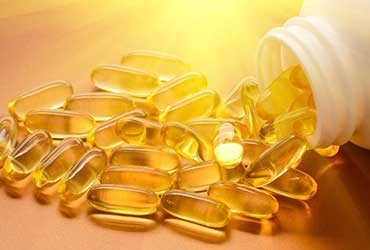THE ABCs of Vitamin D
During the winter months, many places on the earth have fewer sunlight hours each day. Anyone who has a family member with osteoporosis or lives in an area with little sunlight knows the importance of getting enough vitamin D. Additionally, understanding the factors which influence your personal levels of vitamin D can be extremely complicated. One thing is sure, our bodies naturally produce its own vitamin D when sunlight hits the skin. Also, you can also get the vitamin from some foods or by taking a supplement. Nutritional supplements are the most reliable way to get vitamin D, since it is not found in high levels in any foods.
But how does the body make its own vitamin D? Your body makes vitamin D when sunlight is absorbed by your bare skin (larger areas like the back absorb the rays more efficiently). Depending on your type of skin and your physical relation to the sun, the way the UV rays react with your skin can be drastically impacted. Also, your liver and kidneys make a form of the vitamin that the body can use.
Read on to find out more about the ABCs of vitamin D. Here are six key factors:
Location, location, location! Those living farther away from the Equator, have reduced levels of UVB light, especially during the winter months (usually November through February). These periods of shorter days and thicker layers of clothing mean less exposure to the UVB rays.
Skin color. The melanin in skin is a key factor in how much UVB light reaches the skin. Melanin is the body’s natural sun block. So, the darker the skin, the longer it takes for the skin to get enough UVB light to produce vitamin D.
A layer of sunscreen. The zinc oxide commonly found in sunscreen prevents the skin from burning by blocking UVB light, which means it also slows down the natural production of vitamin D. But human error in applying sunscreen might make sunscreen less of an obstacle to getting these rays.
Air quality. Fine (carbon) particles in the air, which are by-products of burning, are scattered in the air and absorb UVB rays before they reach the skin. However, the holes in the ozone layer may mean that more natural light gets through.
Body Mass. Body fat does more than keep you warm in the cold, itmay actually store this vitamin—kind of like a rainy day account. But on the negative side, some studies studies have also shown that obesity has a correlation with low vitamin D levels.
Age. As we get older, our body lose some of its natural ability to convert these sun rays into vitamin D. A vitamin D3 supplement is usually recommended the older you get.
Individual needs and amounts of vitamin D3 (cholecalciferol) varies from person to person. For specific recommendations for your case, please see a medical professional. In the meantime, consider traveling to Johannesburg, South Africa where your chances of producing vitamin D all year round are the highest.

